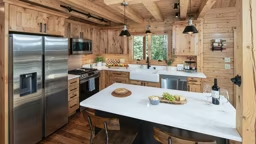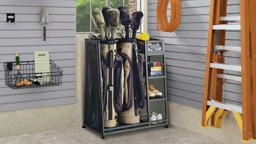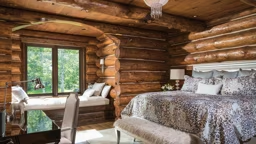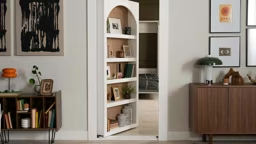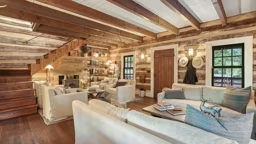

The “tiny house” movement is everywhere. You can’t turn on a home-improvement channel without stumbling across a show featuring folks designing a “dream home” that’s 200 square feet and costs less to build than the price tag of most cars.
It’s an enticing notion, but is this kind of extreme minimalism realistic for the long haul? Probably not.
Actually, the idea of diminutive, efficiently designed homes is far from new. Log home enthusiasts have proclaimed their love of small-house living for centuries, but we have more practical, dare we say livable, expectations – not to mention sound approaches to accomplishing our goals.
Four log home experts from across the United States weigh in with their seven best ideas for designing a home that will let you live large in a small space.
Conduct a Self-Audit
“The first step to successfully designing any home (but that’s vital to small home design) is to assess what you can and cannot live without,” says Lynn Gastineau, founder of Gastineau Log Homes in New Bloomfield, Missouri.
Lynn should know – in the past 40 years, her company has built homes of every shape and size, including a line of 400-square-foot-and-under, full-log houses called “Cabins 2 Go.”
Matt Franklin, a licensed architect for Boise, Idaho-based M.T.N Design, offers the same advice.
“Ask yourself what you really need in terms of space and amenities,” he says. “For example, giving the toilet its own room within the bathroom is popular for obvious reasons, but building codes require minimum clearances between the fixture and walls. This, plus the framing, adds square footage to a bathroom. If the toilet is out in the open, you can save that space.”
Eliminating the bathtub is another big idea when building small. “I was at a tradeshow and saw a sign that read ‘Tubs are Dead,’” says Jeremy Bertrand, the Outside Sales Manager for Log Homes of America in Jefferson, North Carolina. “Of course, there are people who prefer a bath; but if you’re a shower person, you can save a lot of space by leaving the tub out.”
Jeremy estimates that by forgoing a standard tub, you can reclaim about 12 square feet to apply to something you would use, like a double-sink vanity or a good-sized linen closet.
Waste No Space
Over-designing is a common pitfall during the home design process. How many bedrooms and baths do you really need? Is a home office absolutely necessary? If you have frequent overnight company, a dedicated bedroom and bath may make sense.
Likewise, if you work from home full time, you’ll probably want a dedicated office. However, if guests are sporadic and you only need a computer to shop online or monitor your Fantasy team, you can probably combine these functions into one room and opt for a powder room or a compact three-piece bath. And it’s less to clean.
Formal entries and hallways are dead space. To make the most of every inch of your small home, take them out of the picture.
“Instead of halls, arrange an open layout that circulates, making it easy and logical to get from one room to another. And keep your floor plan simple overall,” Matt advises.
Sometimes hallways are necessary. In that case, design them to be multifunctional.
“We built a home for a client who needed space for a desk but didn’t want a full home office,” Jeremy explains, “so we designed the end of the hallway to accommodate his desk. The area is compact but efficient.”
Kitchen pantries are another amenity you may want to reconsider if you’re building small.
“Actually, there’s an emerging trend afoot to do away with walk-in pantries and go back to cabinet pantries,” Matt says.
You might spend a little more money on cabinetry, but you can increase your kitchen’s workable square footage substantially.
Shuffle the Stairs
When it comes to eating up space, nothing devours it more vigorously than stairs. For example, in an 1,100-square-foot home, a straight-run staircase can require about 42 to 48 square feet. L- and U-shaped stairs require more. Fortunately, there’s even a solution for that, and it doesn’t mean you have to live in a single-story ranch.
“As a general rule, it’s more cost effective to build up than out,” according to Lynda Tompkins, a Principal with Timberhaven Log Homes in Lewisburg, Pennsylvania.
“Of course you will need a staircase in a two-story home, but we’ve come up with a concept that removes them from the main living area. Instead, we created a bump-out for the sole purpose of housing the stairs. It boosts the usable square footage inside and gives the exterior a little extra architectural interest, too.”
Design Around Appliances
It may seem like putting the cart before the horse, but when planning your kitchen, consider choosing your appliances first and designing around them.
“A great way to save space in a small home is opt for apartment-sized refrigerators and stoves,” Lynn suggests.
Matt agrees. “Stackable full-size washers and dryers have come a long way. They enable you to install a narrow laundry closet rather than a full-scale laundry room.”
Of course the decision to downsize appliances will depend greatly on your lifestyle. If this is your full time home and you have a large family or entertain often, the idea of going small here may be half baked.
Get Out of the Swing
Unless you’re an architect, door-swing clearance is a home-design component that’s not given any thought, but it can add unnecessary and unusable square footage to your home’s overall footprint.
An alternative? Pocket doors.
“They are great space savers!” exclaims Lynn Gastineau.
There’s only one problem: In a full-log home, the plumbing, wiring and HVAC ducts are often contained within the interior framed walls to keep the logs pristine.
“When you can’t embed a door in the wall because mechanicals are in the way, hang it outside,” Lynn says. “Sliding barn-style doors are perfect substitutes, and they are really hot right now.”
Rob Peter to Pay Paul
Utilities and the mechanical equipment that goes with them are necessary components to the function of your home, but it doesn’t mean they need their own room. Lynn offers some creative suggestions to steal back the space they take.
“Tankless hot water heaters give you hot water on demand and take up a lot less space than the traditional variety. And depending on your home’s size, an exterior heat pump may be a good substitute for a furnace,” she suggests. “They sit entirely outside, like an air conditioner, so you don’t have to make room for a large unit inside.”
Minimizing the area mechanicals require enables you to apply that square footage to space you can enjoy.
Take it Outside
In a small footprint, the exterior living area becomes just as important as the interior. The good news is that porches, decks and patios cost a fraction of constructing your log home.
“Covered areas expand your usable entertaining space, regardless of weather, and spending a lot of time outside fits right in with the log home lifestyle,” Jeremy Bertrand says. “I always recommend that our customers incorporate as many as their design and budget will allow. In some cases, their outside square footage is greater than what they have inside.”
Storage Solutions
Begin with the end in mind,” said Stephen Covey, famed author and co-founder of FranklinCovey. That’s excellent advice as you’re planning a log home that functions with ease, and smart storage is a key component.
So while you’re designing, look at your floor plan, identify all the places where you can add storage and let clutter be a thing of the past.
Built-ins are Your Best Friend
Take advantage of what would otherwise be dead space. Install built-in dressers in the low area beneath a steeply pitched roof. Insert shelving for books and collectibles within knee walls and along hallways.
Make better use of a bump-out by integrating a storage bench. But one of the smartest places to add built-ins is beneath a staircase. From large closets to cubbyholes, this is an area begging to be better utilized, and you’ll be surprised how much it will hold and how attractive it can be.
Clever Cabinetry
Kitchens are full of gadgets. Whether it’s an appliance that gets daily use or specialty items that only come out at the holidays, you need places to stash your stuff.
Corner cabinets can swallow your equipment up, so consider a “super Susan” so you can easily access the stuff in the back and use the cabinet to the max. And whether you are planning a walk-in pantry or the cabinet variety, shelves, pullout baskets and drawers will keep everything more organized.
Raise it Up
If space is at a premium, try elevating your storage options. Space between the roof and a ceiling can be converted to a mini-attic, accessed by a small door inside. You can do the same with the extra clearance in the garage. In a dining room, stash extra seating off the floor by installing a Shaker-style chair rail beneath the ceiling.




